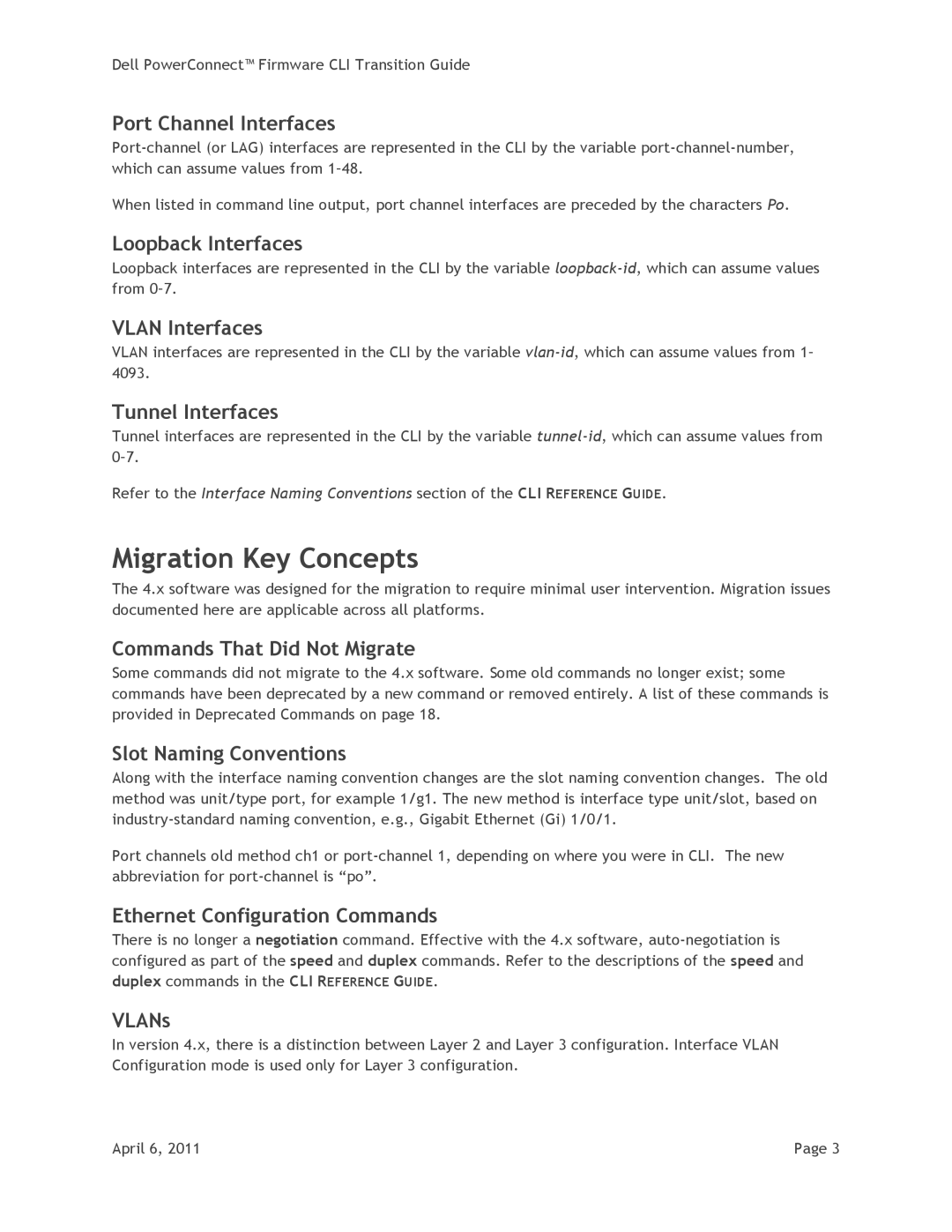PCM6220, PC8024, PCM8024-k, PC8024F, PCM8024 specifications
The Dell PCM6348, PC7000, PCM8024, PC8024F, and PCM8024-k are part of Dell’s innovative line of networking products designed to enhance data management, increase network performance, and improve overall efficiency for organizations of varying sizes. Each model is tailored to specific use cases while sharing common attributes that underscore Dell's commitment to quality and performance.The Dell PCM6348 is a high-performance stackable switch suitable for large enterprises demanding robust network performance. It features 48 ports of 10/100/1000Base-T with Power over Ethernet (PoE) capabilities, making it ideal for powering devices such as IP cameras and VoIP phones. The switch supports various Layer 2 and Layer 3 features enabling organizations to implement complex network topologies. Additionally, its redundant power supply ensures reliability and uptime, crucial for mission-critical applications.
The PC7000 is a versatile platform focusing on scalability and flexibility. This model emphasizes a modular design that allows users to customize their system according to their networking needs. The PC7000 supports advanced routing protocols and offers integrated security features, aiding organizations in maintaining a secure and efficient networking environment. It also has support for virtualization technologies, enhancing capacity utilization and operational efficiency.
The PCM8024 is a switching solution recognized for its high density and advanced features. Equipped with 24 10G SFP+ ports, it provides exceptional throughput and enables connectivity for high-bandwidth applications. The device supports virtual LANs (VLANs) and advanced Quality of Service (QoS) functionalities, thereby enabling prioritized data traffic. Network managers benefit from its intuitive management interface, simplifying network configurations and monitoring.
The PC8024F adds another layer to this lineup with its fiber optic capabilities. Ideal for environments where long-distance connections are required, this model includes 24 10 Gigabit SFP+ ports along with comprehensive layer 3 routing features. Enhanced security protocols and support for stacking technology make this a solid choice for organizations looking to create a resilient network infrastructure.
Lastly, the PCM8024-k is an advanced switch designed for high-volume data applications. This model stands out with its support for up to 48 10G SFP+ ports, optimized for high-density data center deployments. It includes features such as intelligent automation and analytics for proactive network management, ensuring that organizations can respond to demands effectively.
In summary, the Dell PCM6348, PC7000, PCM8024, PC8024F, and PCM8024-k switches are engineered with cutting-edge technologies ensuring enhanced performance, reliability, and flexibility, making them suitable for diverse networking environments. Each model caters to specific needs while adopting a user-friendly approach to network management, allowing organizations to thrive in today’s data-driven landscape.
